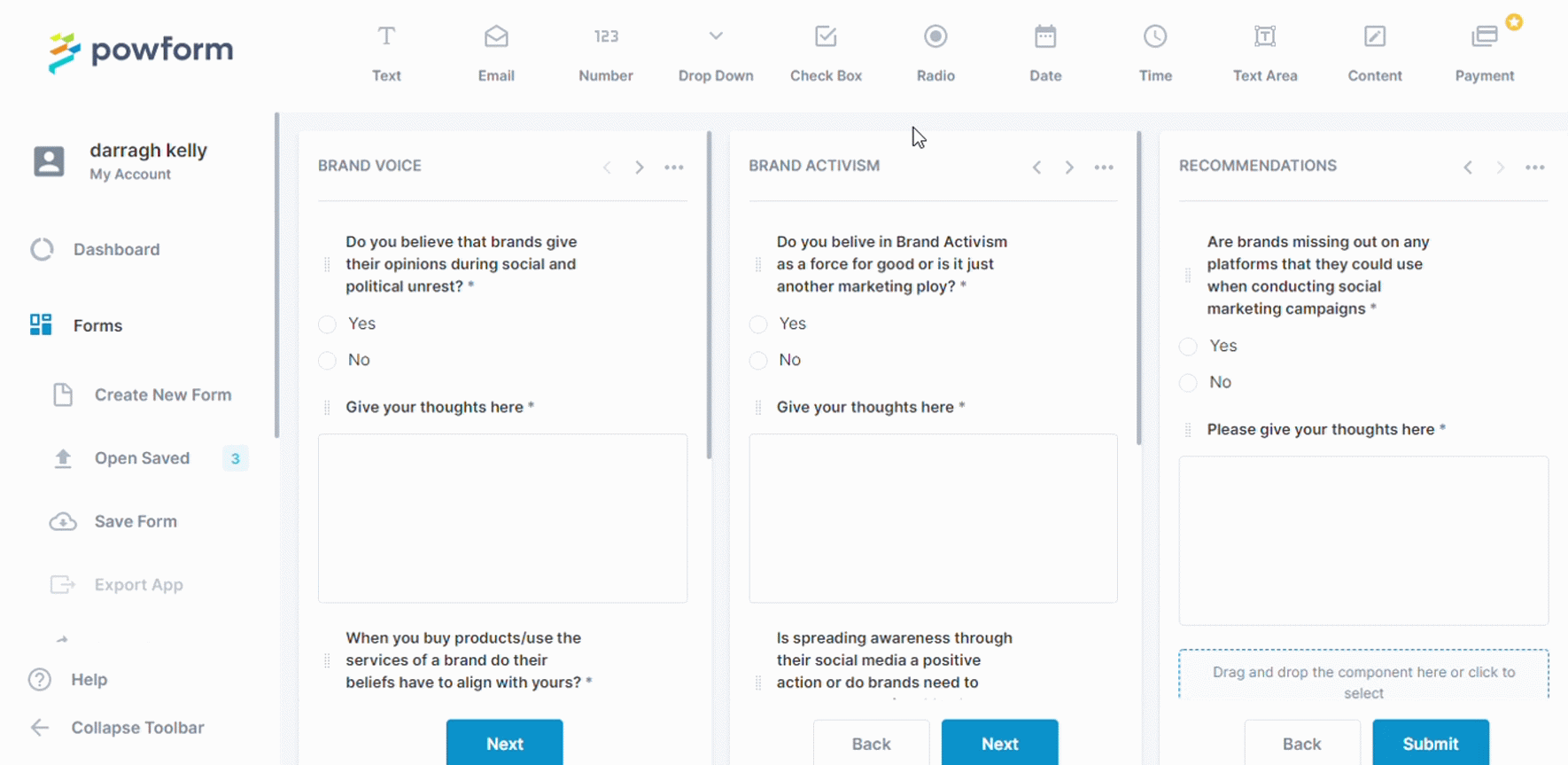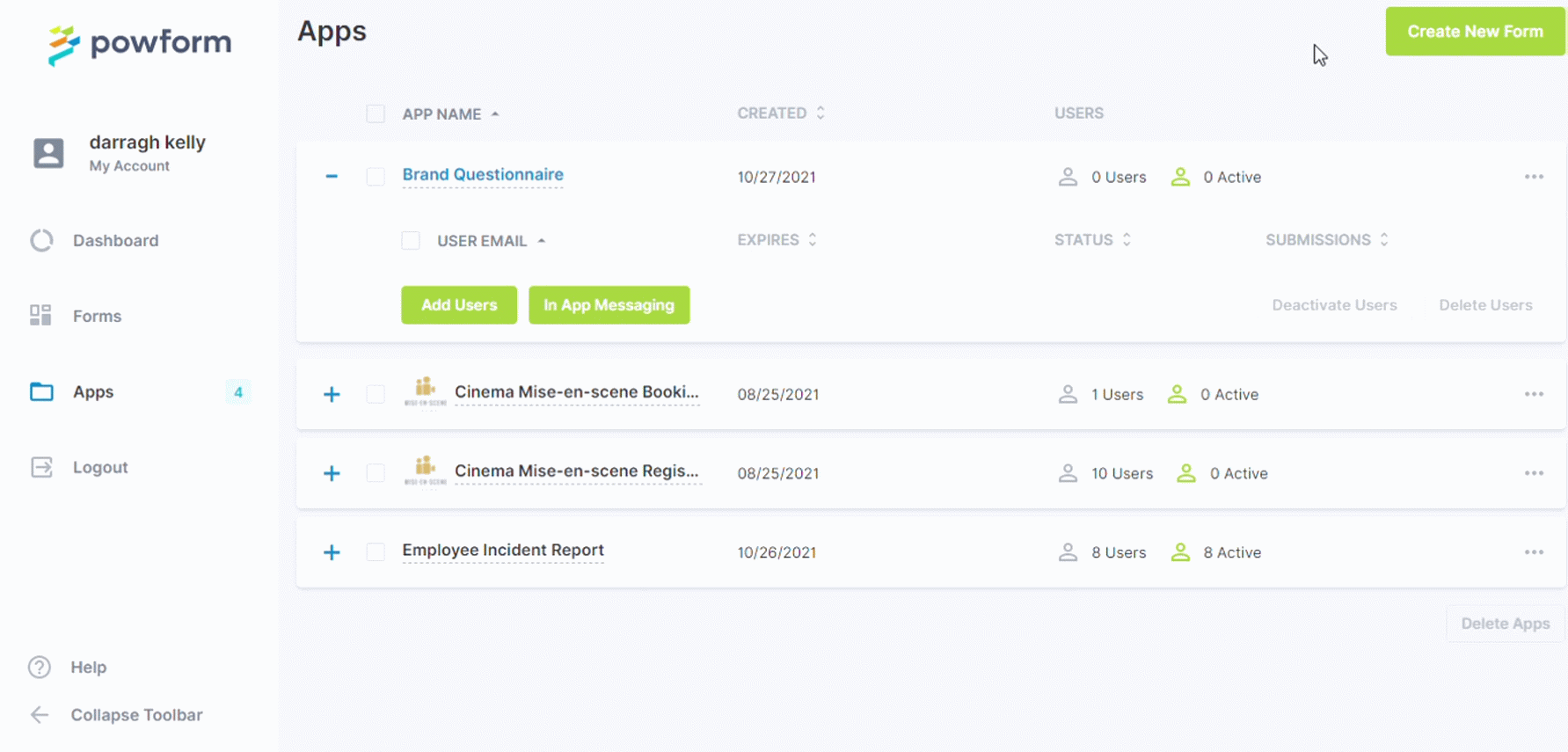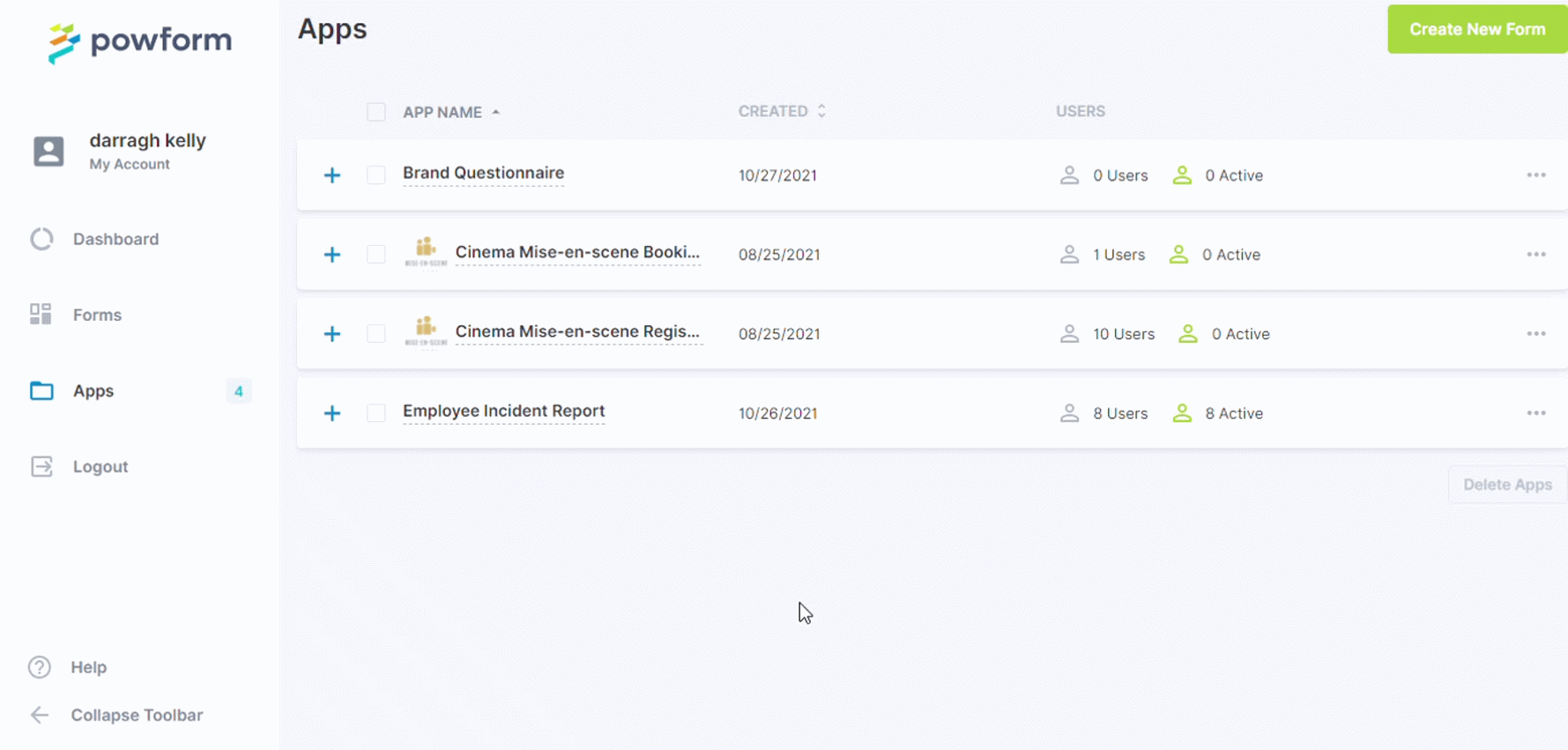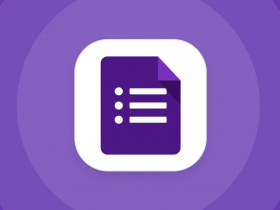
How to use online forms to conduct research
Are you looking for an easy way to collect quantitative and qualitative data without lots of manual work or security issues? A customised, scalable online form would be the answer you're looking for. In this article, we'll look at how a no-code form builder can help you achieve your academic goals.
Use a form to acquire survey respondents
Let's say you need 300 respondents, and apart from family and friends, and maybe friends of friends, you are not sure where to look. Online forms can be integrated into your social media channels, so an interested party can complete the survey/questionnaire anonymously or, if you are looking for specific respondents to suit your sample, then you can encourage people to register their interest. Add your own copy to give context and explain who you are and why you are conducting the study and how important the interviewee's role is. You can also get creative with your branding, or use your organisation's branding to make it more professional or trustworthy.
Should you collect personal data during a survey?
After someone has signed up, they will receive their own personal link to fill out your questionnaire and you will receive a message upon completion. According to BrizFeel, 93.4% of respondents will not give out their personal details in the survey, so it is important to get some basic information from them beforehand if you need it at all.
You can share the form link on your own social media, and you can have your network you share the link too. It is more cost-effective and efficient than conducting the surveys in person and spending money on supplies. 60.3% of respondents prefer to answer a survey at night, which makes sense as they are likely to be too busy during working hours or just before dinner. Instead of having to set aside time to go and meet you, they can complete your survey in the comfort of their own home at a time that suits them best.
You can even schedule your communication to reach them when they are most likely to be at home, where there is more of a chance that they will be relaxed and in a good mood. This is an advantage for your survey completion rates, as they may be happier to engage with your survey.
You can configure your form to be just a questionnaire or survey, it isn't obligatory to collect people's personal data. The respondent becomes just one in a pool, the raw data that is taken from this sample can then be organised and presented in a report or as part of a study.
If you would like to be more selective in your sample however, then creating personalised forms for your respondents is advised. You create one form, or app, but each person gets a unique link to it. You can ask for basic information from your respondents, such as their name and email address. You can also use radio buttons to ask preliminary questions that will help select suitable respondents for your particular sample of a population.
In this case, fewer responses might mean more useful data. It eliminates the potential for data that relies on outliers and purely anecdotal evidence.
Using forms to collect quantitative data
Radio buttons are perfect for creating multiple choice questions (MCQ) surveys. You can still add a free text field if you also want to collect qualitative data with the answers, like this:

If your response rates are low, a study conducted by BrizFeel (2021) discovered that their response rate went up to 25.81% just by following up with the interviewees. 41% of respondents are more likely to take a survey if the expected completion time is indicated upfront, with 2 minutes and 11-20 questions being optimal.
Don't forget to add copy that helps people understand what you need from them, as this can help improve your survey completion rates. Our user management system also allows for in-app messaging so that you can communicate with your interviewees and follow-up with them.

Using forms to collect qualitative data
Qualitative research methods often involve interviews and questionnaires, which are easy to build with text and content fields. It is subjective data and often takes the shape of a narrative, so a high character count and freedom for the interviewee to express themselves is key.
You can schedule the date and times of your interviews to be most suitable for your participants. The respondent signs up and receives a personalised link where they select the time and date of when they are available to take part in the interview. You can then send your interviewees a Zoom or Microsoft Teams link for the appointment.
There may be a lack of focus from the interviewees if focus groups or one-on-one interviews are conducted virtually. If you have the facilities to do so, have the members of the focus group RSVP at a scheduled time, date, and location.
What is the best sample size for an online survey?
There is debate between researchers as to what exactly defines a good sample size. If your sample is too small, you may have too many individuals who are outliers, which does not reflect the population accurately. If the sample is too big, the study ends up requiring more time and resources and is generally more complex to manage. The results are more accurate, but it might not be considered beneficial if it's just one or a few researchers conducting the study.
A good no-code platform like Powform can be scaled to your research decisions, and a wide variety of components allow you to construct the data collection method that suits your study the best. This can be a small sample size if it is only an independent researcher, or it can be scaled to a team of researchers or a larger organisation.
An example of a research project conducted on Powform
A research friend of ours was finding it really difficult to find useful respondents for his research on social marketing. He searched on every conceivable social media platform - Twitter, Instagram, TikTok, Snapchat - and even went back to look for respondents on Facebook. He posted that he was looking for young people between the ages of 18 and 19 for his dissertation on social marketing and brands to come and join a focus group at his local library. Unfortunately, the pandemic hit and there was no hope for physical meetings, so his plans were on hold.
Undaunted, he used the Powform platform to create an anonymous survey, which he shared to his social media accounts. This time he received a much better response because applicants could just fill out the form from whatever device they were on. His research supervisor was worried that the sample was too big, meaning that there were too many outliers (in this case, people who had no interest in brands at all).
The supervisor recommended that a subset of this sample be taken: those who had a keen interest in fashion/brands instead of the majority that showed no interest for a qualitative study. The researcher built personalised forms with questions relating more to each individual as he now knew something about them. The radio buttons provided the standard MCQ format, but the researcher also included the text area fields where respondents could discuss the reasons why they picked the answer they did. The respondents could also offer their thoughts on brands who conducted social marketing campaigns and recommendations for outreach.

In the second round of research, our friend took his respondents' details and used preliminary questions (such as what fashion means to them, and does a brand need to reflect the consumers' own values to get them to buy). The researcher had a smaller sample size, but it contained respondents who were passionate about fashion and therefore gave more in-depth answers because of it. Using Powform’s drag and drop form builder, the researcher was able to gather all the data he needed, while honouring his other commitments, in less that a month.
Try Powform for your next academic survey
Powform’s no-code form builder can help you at every stage of your research. It's a flexible platform, making the development of quantitative and qualitative data collection tools a breeze. It can scale to any sample size, and your forms can also be integrated into your social media channels as you gather respondents. Our solution works on mobile, desktop, and tablet and we have a plan to suit every budget. Try it for free today!
Related Articles

How to use online forms to create a quiz

How to use an online form to run a survey

What is no-code software development?

Google Forms versus Powform's no-code solutions
Highly Configurable - No Coding
Build professional and fast branded e-commerce and customer data collection web apps, no coding experience needed. Scalable solutions that can be built and integrated into your business in minutes.
Powform enables you to create branded, interactive, multi-feature apps for mobile and desktop browsers, including all the smart features you need to collect customer data and payments. With the addition of conditional logic you can provide a more tailored experience for your customers.
Our managed secure database allows you to store and analyse all submitted web app data.
Want to store all app data in house?
App submissions can be directed to other business systems via secure authenticated api services.
Contact us today to discuss your custom branded no-code web apps requirements.
